As a new year begins, the International Institute of Tourism is brimming with excitement over the momentous developments made in Indigenous tourism in 2023. From the “National Parks and Native Trails of the Dakotas” tour launched in May, to the inaugural Indigenous leaders lecture series held in December, there has been a stream of firsts for GW and our partners. Here is a closer look at some of these groundbreaking events:
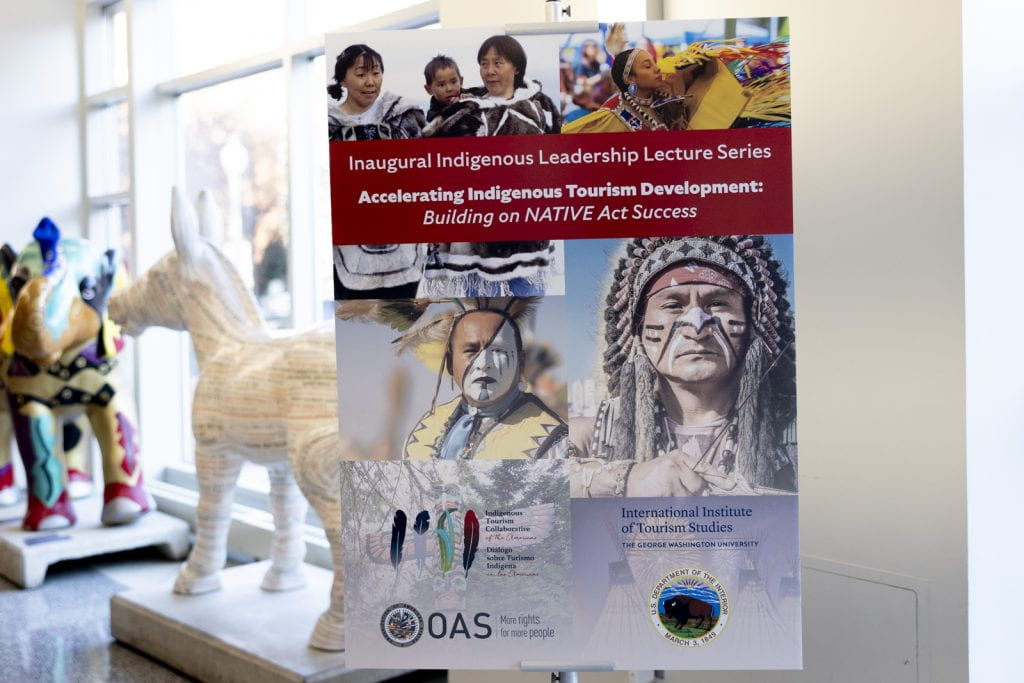
First Distinguished Indigenous Leaders Lecture Series
As cultural heritage tourism grows in popularity, the need to connect Indigenous leaders with leaders in the tourism industry is more important than ever. This need inspired the creation of the first Distinguished Indigenous Leaders Lecture Series, hosted in December by GW International Institute of Tourism Studies (IITS) in partnership with the International Tourism Collaborative of the Americas (ITCA).
The lecture series opened with a powerful statement by Kathy Baird, member of the Rosebud Sioux Tribe, chief communications officer of the Washington Post, and advisor to the board of Illuminative, a non-profit working to rewrite the narrative of Native peoples. Unable to attend due to illness, her statement was read by moderator Ed Hall.
“We have to break through whenever and wherever we can with the truth about Native people…to disrupt the invisibility of Native Peoples. And what is indigenous tourism development, if not a powerful disruption of Native invisibility?” her statement read.
Keynote speakers focused on the way the NATIVE Act, passed by congress in 2016, has reinforced efforts by the tribes to develop, manage and control Indigenous tourism, and how the NATIVE Act could be better implemented and supported today.
“The NATIVE Act reminded the tourism industry and national tourism strategists that we are still here and have so much to offer,” Baird’s statement read.
The event was widely attended on livestream by Indigenous and industry leaders from throughout the Americas. It brought Indigenous leaders to the Jack Morton Auditorium stage from across the country, including representatives from the Native tourism alliances in North Dakota, South Dakota and Montana and federal government leaders from the Departments of Interior, Commerce, Transportation, State and Agriculture. The success of the event highlighted how collaborations between tribes, governments, industry and universities can accelerate Indigenous tourism development.

“National Parks and Native Trails of the Dakotas” Tour
In May, the South Dakota Native Tourism Alliance (SDNTA), in partnership with GW Tourism Institute and the South Dakota Department of Tourism, debuted a groundbreaking tribal lands tour. The nine-day excursion takes visitors through tribal lands in both South Dakota and North Dakota, and is currently the only experience of its kind proffered through a national tour operator, Destination America.
On the tour visitors spend time with the Sicangu Lakota Nation, Oglala Lakota Oyate, and the Standing Rock Sioux Tribe, where they meet with Native artists and performers, visit Wounded Knee Memorial and Sitting Bull Monument, sample authentic Native American food, and experience traditional storytelling. It is an opportunity to learn directly from native people about their history and culture through their own stories and landscapes.
The early stages of the tour’s development faced some pushback as the tribes expressed concerns surrounding the protection of sacred sites. Many tribal members also felt that the tour would create opportunities for economic growth and cultural education.
“There are a lot of romanticized stories written about our people,” said Sarah Kills In Water, SDNTA member, in an article on the tour for Bloomberg News. “We thought it was a great opportunity for reconciliation and educating people about who we are today.”
The tour is tribal-led and visits almost exclusively tribal-owned businesses, and ultimately the tribes decide what sites and aspects of their cultural heritage are shared with visitors.
Recently GW has been working with the SDNTA to help them establish themselves as an independently operated nonprofit organization at the state and federal level. Becoming an independently operating nonprofit will allow SDNTA to further expand as an organization, partnering with industry organizations and fundraising for native tourism initiatives.
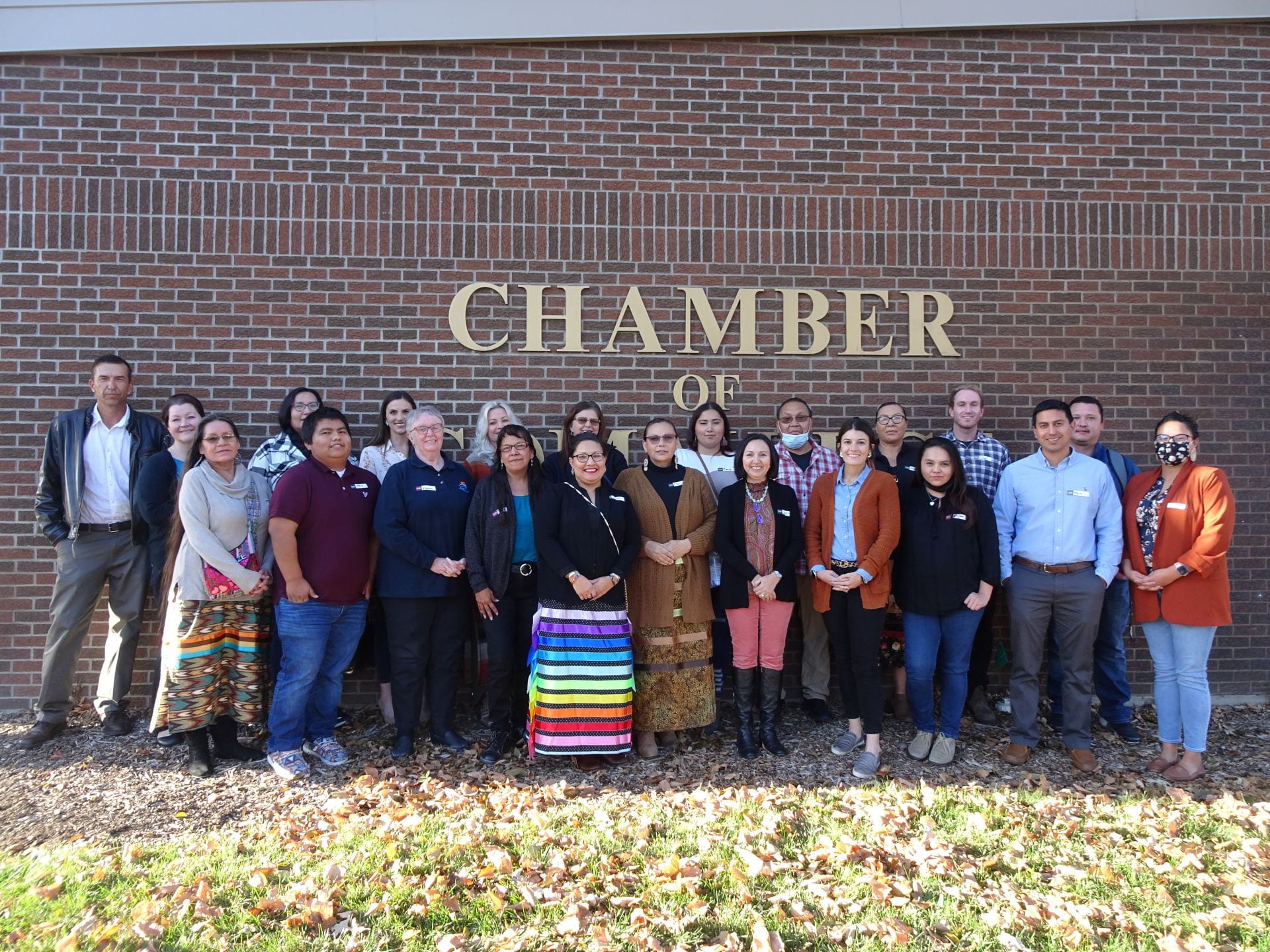
Indigenous Tourism eLibrary Launch
Major support for Indigenous tourism development arrived in August with the launch of the Indigenous Tourism eLibrary. Created by the Indigenous Tourism Collaborative of the Americas (ITCA) – a partner of the GW International Institute of Tourism Studies – the eLibrary is the first and only repository of its kind to focus specifically on Indigenous tourism.
The eLibrary is the inaugural project for ITCA, whose vision is to help Indigenous communities across the Americas benefit from cultural tourism. This means not only economic growth for Indigenous communities but also the preservation of natural and cultural resources.
Entries on the site range from toolkits and guidelines to case studies and industry research, all aimed at helping develop and manage sustainable Indigenous tourism. Indigenous businesses, as well as government, nonprofit and industry partners, can search topics ranging from community development, environmental conservation, digital marketing, visitor management and many more. The articles can also be filtered by English or Spanish.
Contributors to the library currently include the World Indigenous Tourism Alliance, the United Nations Tourism Organization, Intrepid Travel, The Travel Foundation, Planeterra and the FSC Indigenous Foundation, to name a few, but additional resources to the eLibrary are added on a rolling basis. One may have been added as you read this post… You can check and see at https://elibrary.indigenoustourismamericas.org/
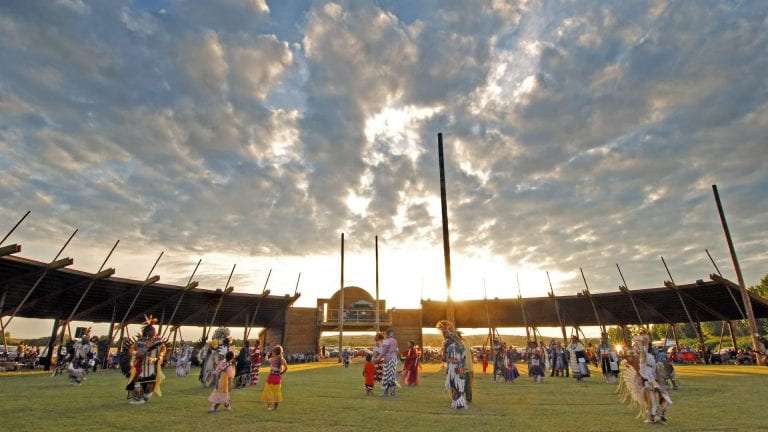



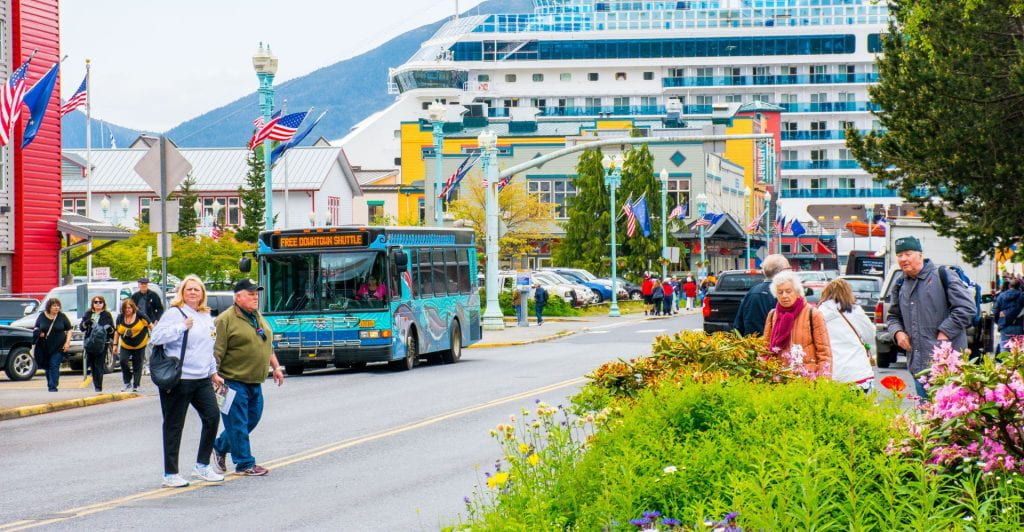


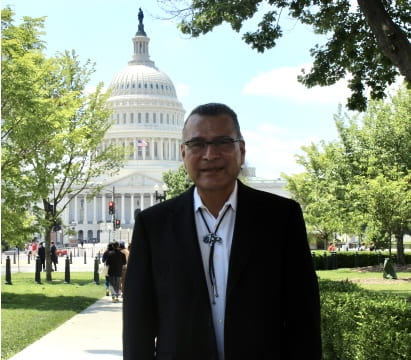
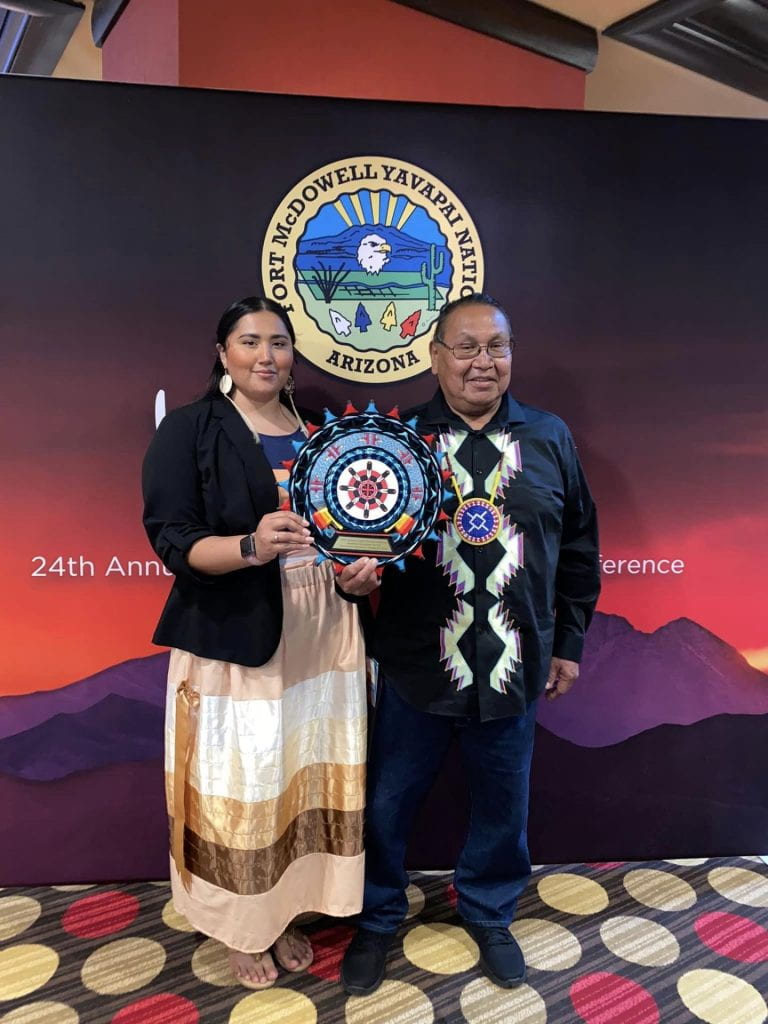







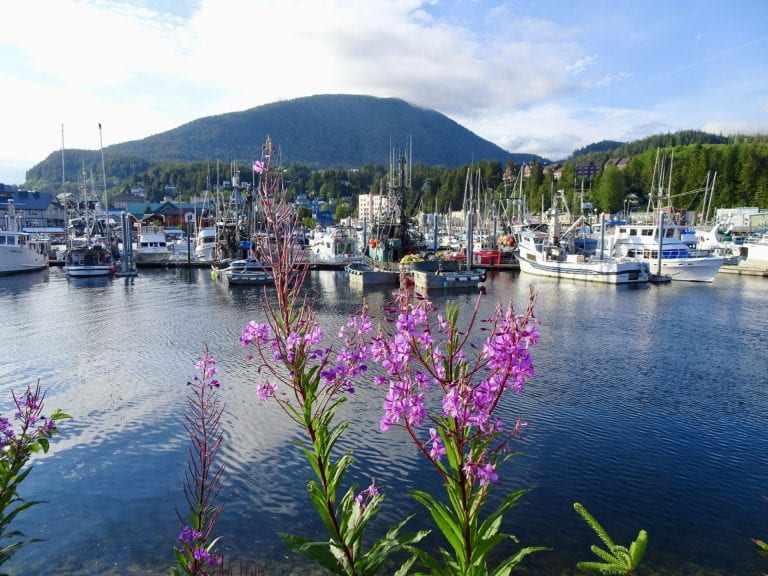
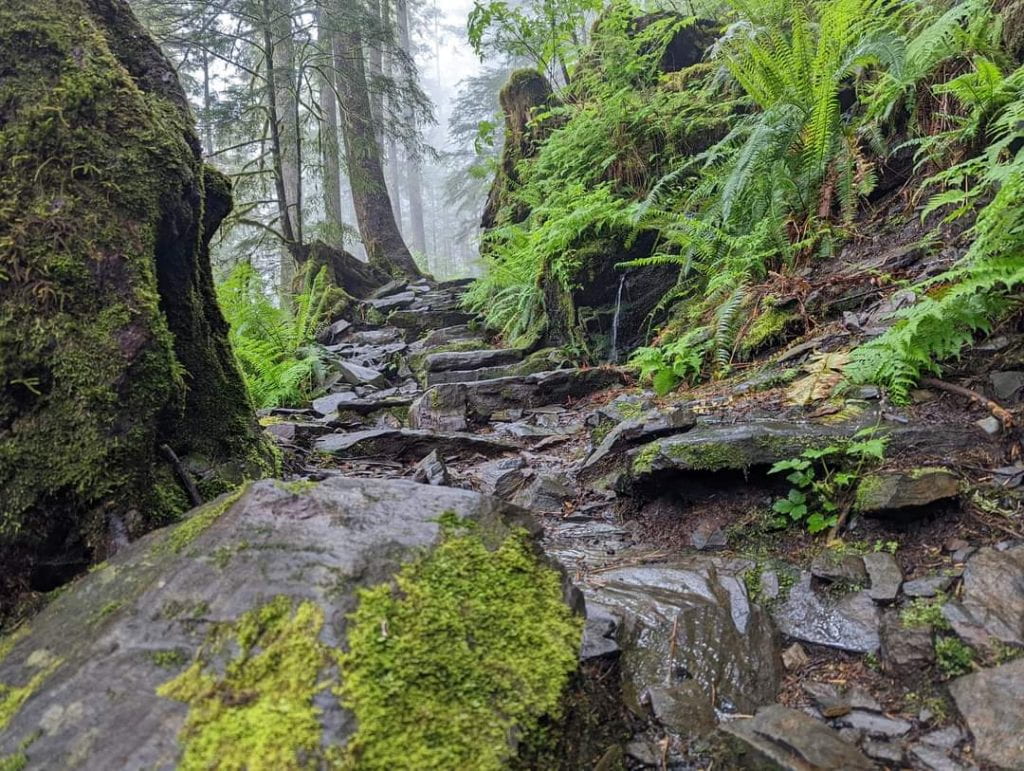




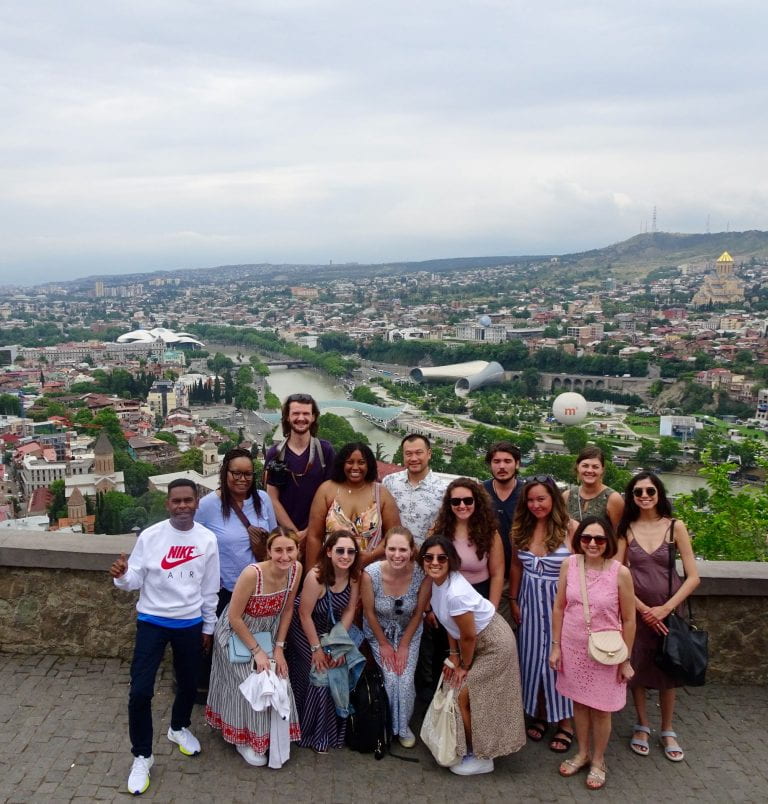






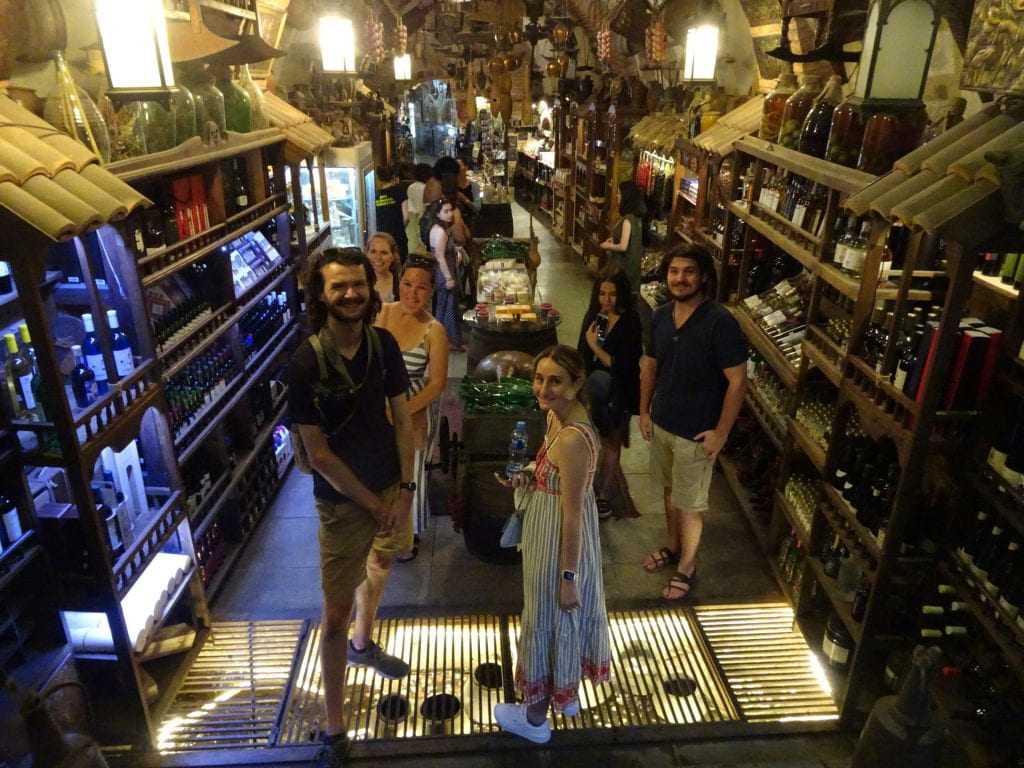
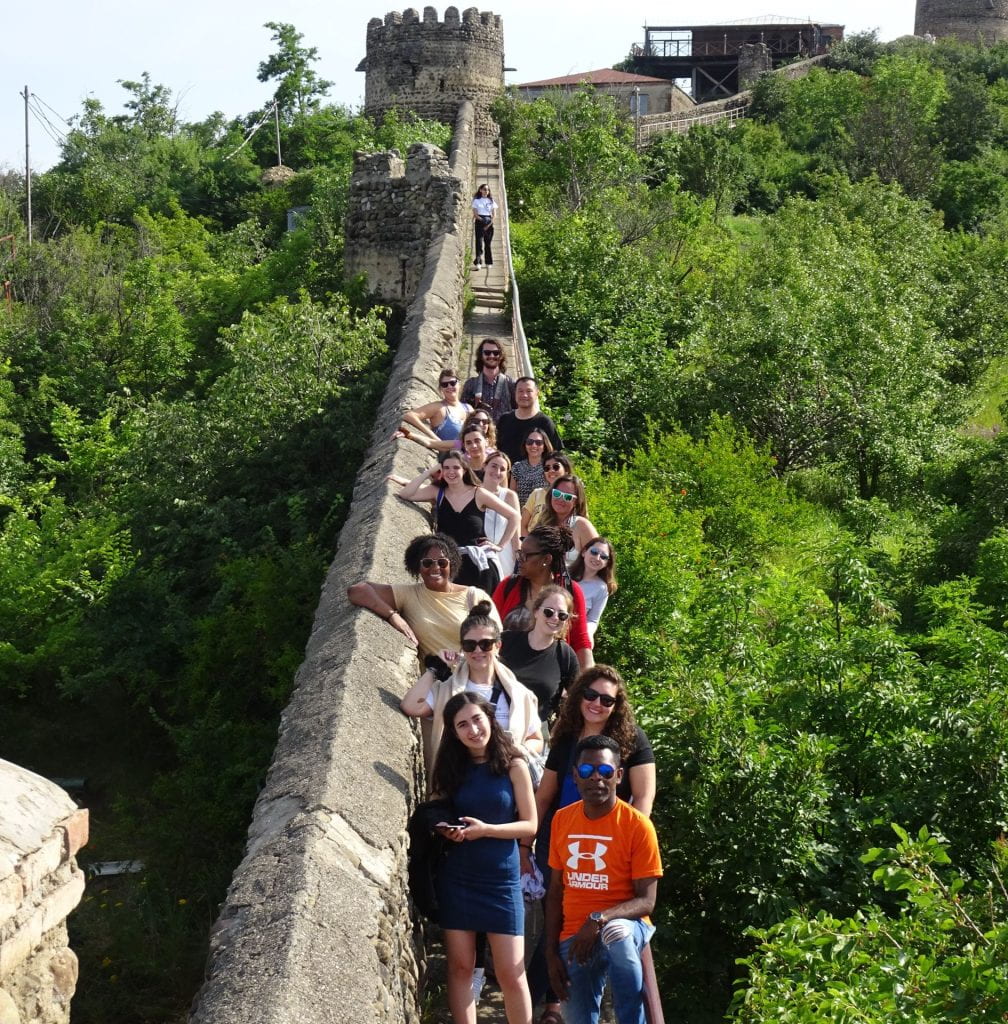


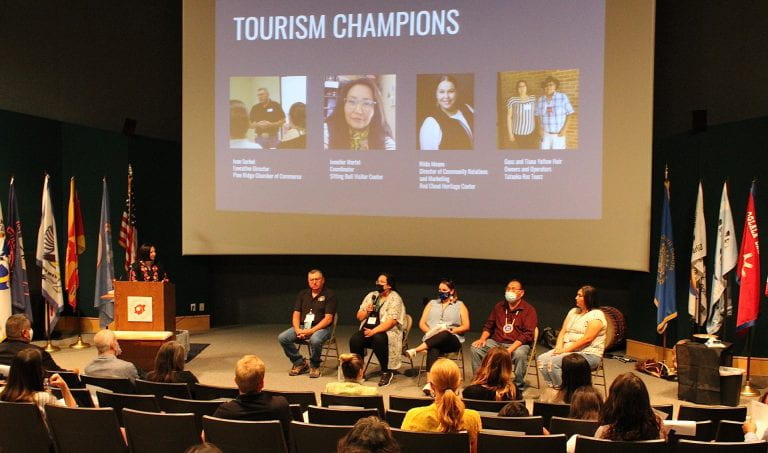

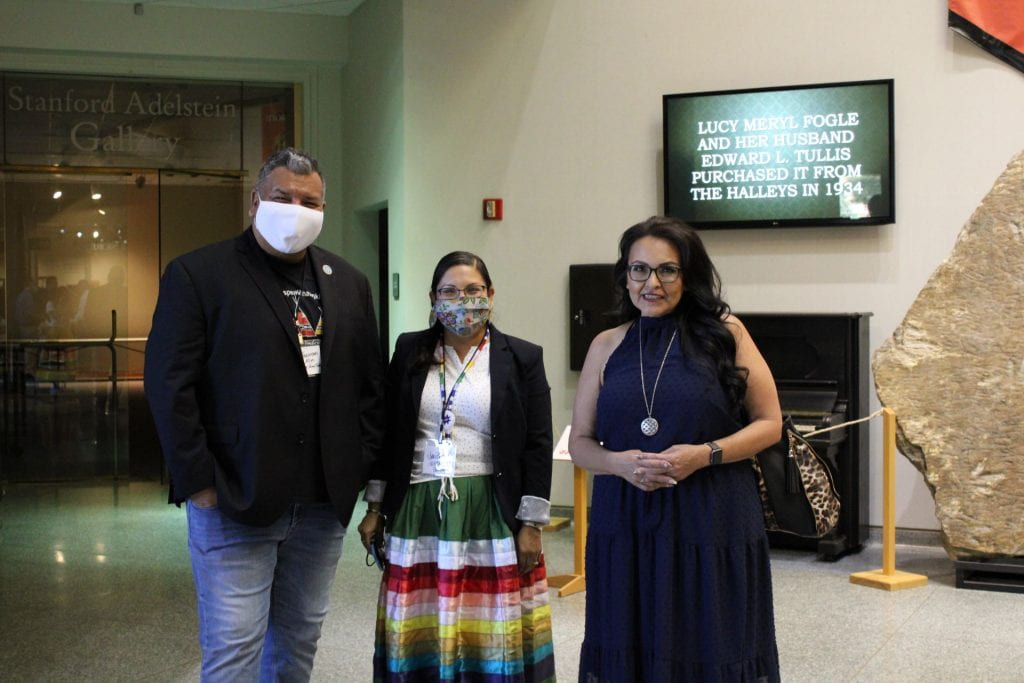 (Left) Ira Taken Alive, Vice-Chairman, Standing Rock Sioux Tribe; (Center) Dew Bad Warrior, Event Coordinator and Vice President, Black Hills Powwow Association; (Right) Representative Tamara St. John, Event MC and District 1 Representative, South Dakota House of Representatives, Sisseton-Wahpeton Oyate
(Left) Ira Taken Alive, Vice-Chairman, Standing Rock Sioux Tribe; (Center) Dew Bad Warrior, Event Coordinator and Vice President, Black Hills Powwow Association; (Right) Representative Tamara St. John, Event MC and District 1 Representative, South Dakota House of Representatives, Sisseton-Wahpeton Oyate

